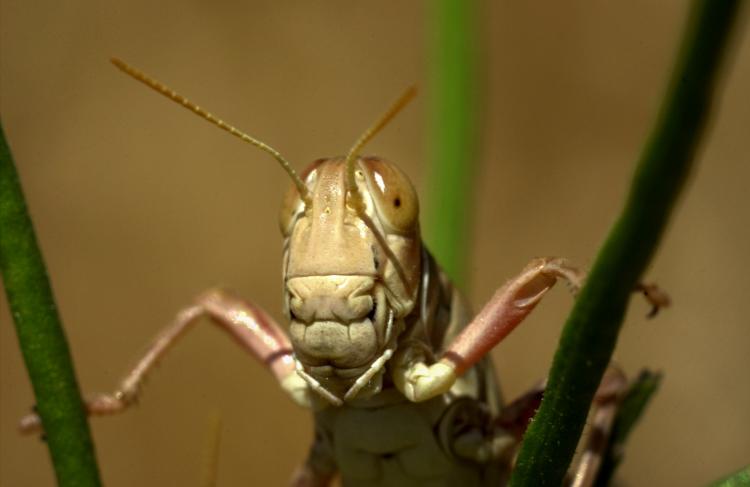Scientists from Washington State University (WSU) and the USDA are predicting a small plague of grasshoppers this summer, the worst in 30 years, concentrated in the West.
Last fall USDA scientists found large numbers of grasshopper eggs and said that this year’s mild spring left conditions favorable for an outbreak, according to a WSU press release.
“The plains states … the Dakotas, Wyoming, Montana, those are areas where they are predicting a very severe grasshopper year,” said Richard Zack, associate professor of Entomology at WSU.
The Animal and Plant Inspection Service also predicted a heavy outbreak in Nebraska with less severe outbreaks in Idaho, Nevada, and Utah.
Zack explained that grasshopper outbreaks are cyclical, which means if conditions are good in a given year, the insects will lay a lot of eggs in the fall. More grasshoppers will hatch in the spring, if that year’s weather is again good, the cycle will repeat and grasshopper numbers will multiply.
“We’ve had about four or five years now [in Washington] where grasshopper numbers have built up,” Zack said, adding that grasshoppers had been problematic on about 66,000 acres in the past but last year infested over 200,000 acres.
He said that the past two weeks of cold rain in the area might reduce the grasshopper population somewhat.
The WSU release said that last summer, 7,000 acres of high desert grassland in southeastern Oregon were decimated by grasshoppers. The search for food can motivate the creatures to fly 30-50 miles a day.
“They feed on virtually everything that’s green,” said Zack. When rangelands wither in June and July, “that causes the grasshoppers to move from these areas and move to wherever is still green;” which is often irrigated farmland.
The people most affected by grasshopper outbreaks are farmers whose land abuts open rangeland, but Zack said these farmers know what to look for and will use pesticides if too many are found.
People in urban areas might notice more grasshoppers but the insects won’t cause much trouble in cities.
There are also warnings for outbreaks of Mormon crickets, a type of grasshopper, which does not fly but swarms by the tens of thousands, “devouring everything in its path” according to the release.
Last fall USDA scientists found large numbers of grasshopper eggs and said that this year’s mild spring left conditions favorable for an outbreak, according to a WSU press release.
“The plains states … the Dakotas, Wyoming, Montana, those are areas where they are predicting a very severe grasshopper year,” said Richard Zack, associate professor of Entomology at WSU.
The Animal and Plant Inspection Service also predicted a heavy outbreak in Nebraska with less severe outbreaks in Idaho, Nevada, and Utah.
Zack explained that grasshopper outbreaks are cyclical, which means if conditions are good in a given year, the insects will lay a lot of eggs in the fall. More grasshoppers will hatch in the spring, if that year’s weather is again good, the cycle will repeat and grasshopper numbers will multiply.
“We’ve had about four or five years now [in Washington] where grasshopper numbers have built up,” Zack said, adding that grasshoppers had been problematic on about 66,000 acres in the past but last year infested over 200,000 acres.
He said that the past two weeks of cold rain in the area might reduce the grasshopper population somewhat.
The WSU release said that last summer, 7,000 acres of high desert grassland in southeastern Oregon were decimated by grasshoppers. The search for food can motivate the creatures to fly 30-50 miles a day.
“They feed on virtually everything that’s green,” said Zack. When rangelands wither in June and July, “that causes the grasshoppers to move from these areas and move to wherever is still green;” which is often irrigated farmland.
The people most affected by grasshopper outbreaks are farmers whose land abuts open rangeland, but Zack said these farmers know what to look for and will use pesticides if too many are found.
People in urban areas might notice more grasshoppers but the insects won’t cause much trouble in cities.
There are also warnings for outbreaks of Mormon crickets, a type of grasshopper, which does not fly but swarms by the tens of thousands, “devouring everything in its path” according to the release.


